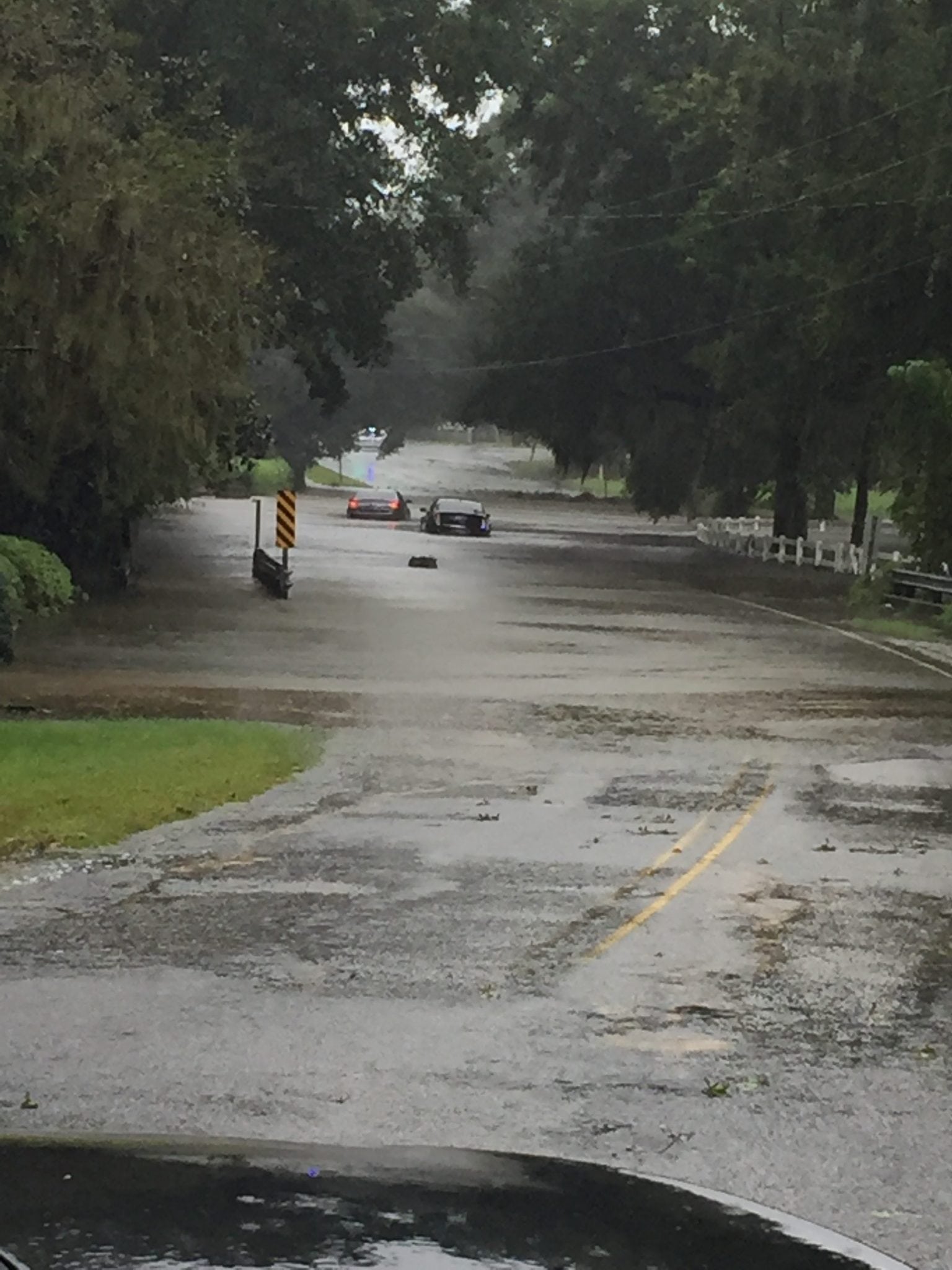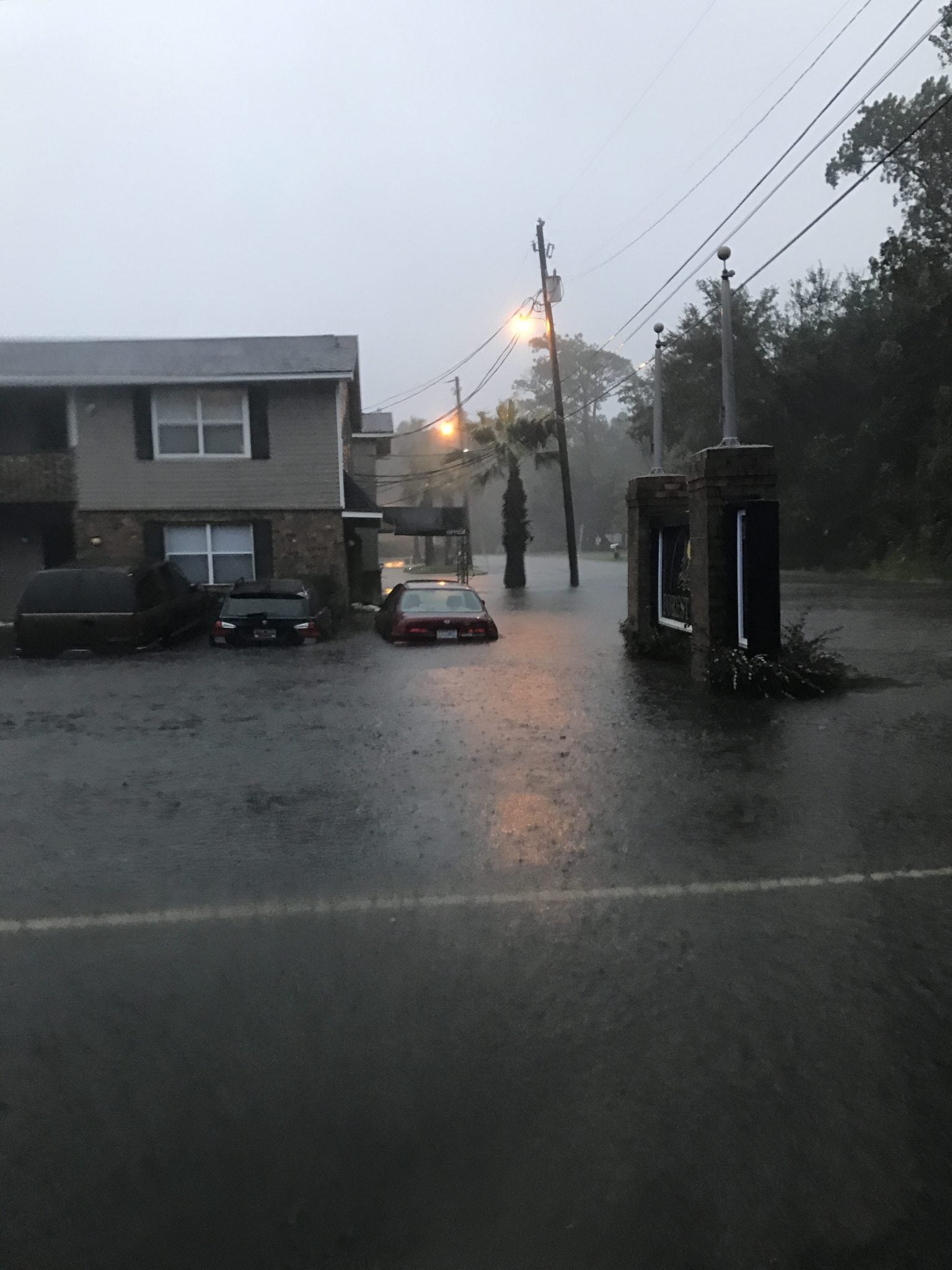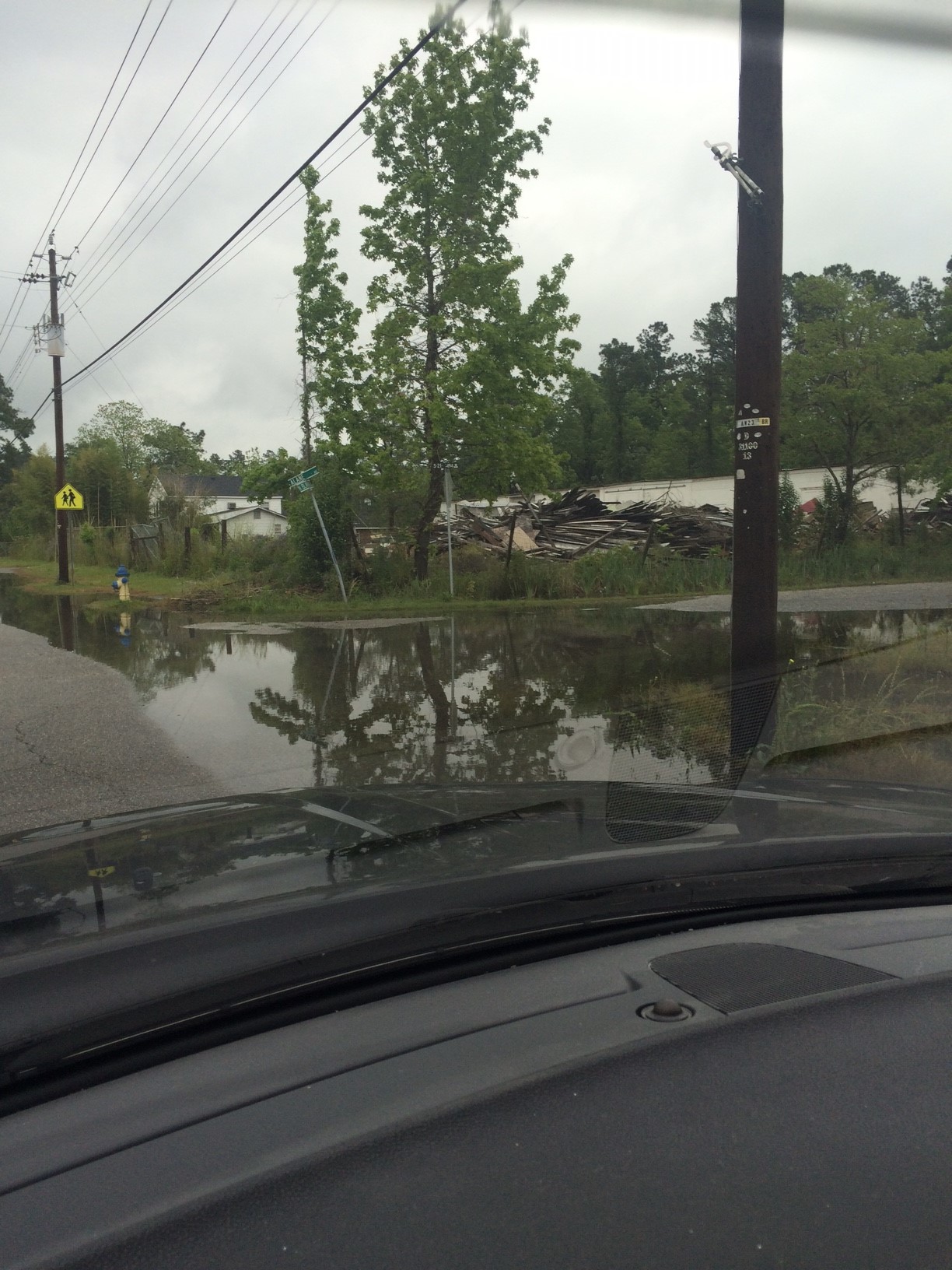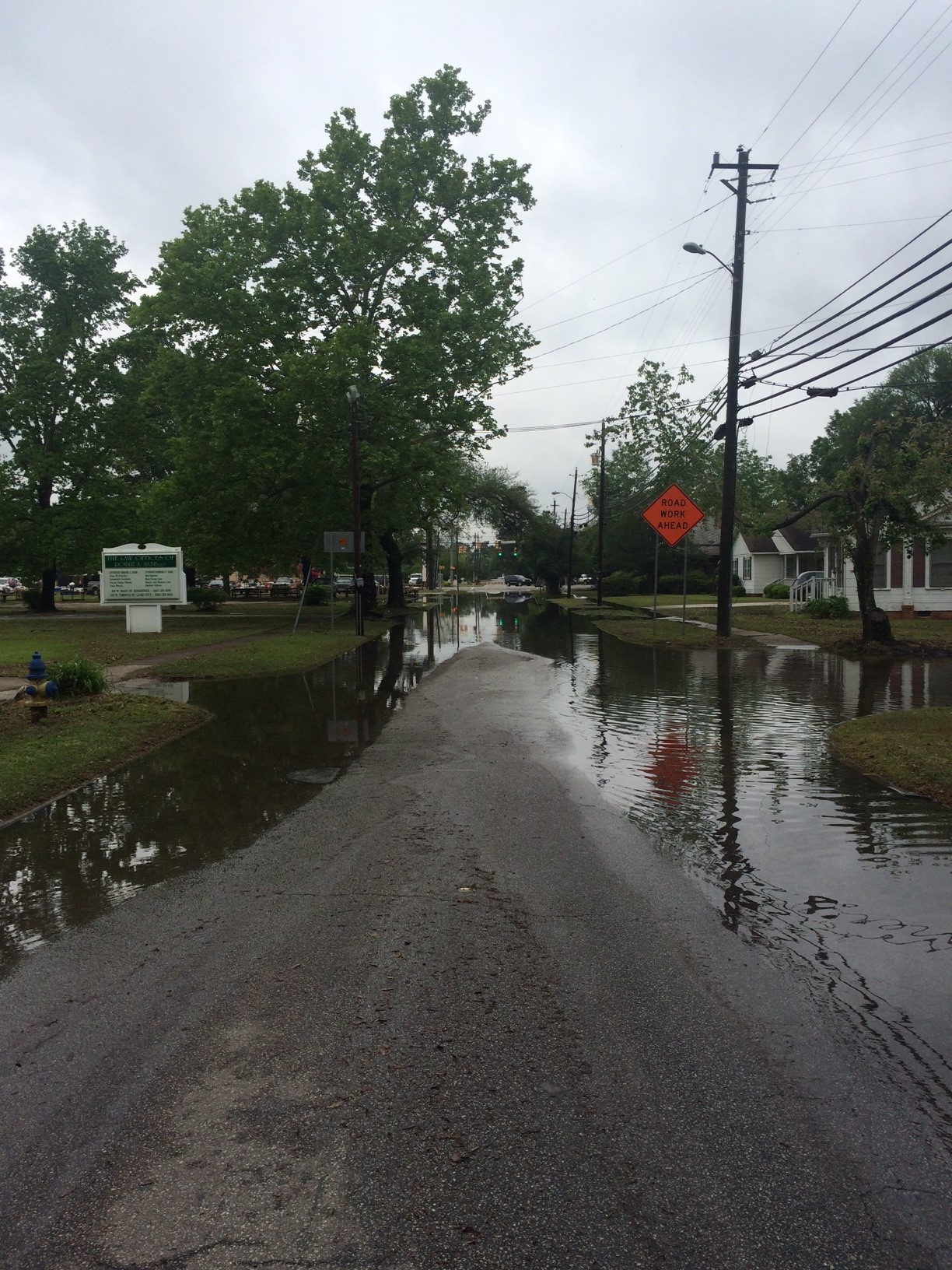When Hurricane Florence brought devastating floods to the Carolinas in September, it was another reminder to South Carolinians that the threat of too much water with nowhere to go isn't so unexpected anymore.

In the City of Hanahan, officials have noticed that flooding has grown more severe over the years.
Photo: City of Hanahan.
In many South Carolina cities and towns, navigating floodwaters has become a dangerous way of life.
The thing about flooding in the City of Hanahan is that it doesn't take a major weather event anymore — Any old heavy rain will do it.
"In a matter of minutes, there's nowhere for the water to go, so the streets are flooded. We've had houses flooded," said Hanahan Councilmember Christie Rainwater, adding that local officials have become well-versed in Federal Emergency Management Agency processes.
"We've become best friends with FEMA because the problem has happened over and over," she said. "Just when we get something settled with FEMA, we've got more to work on."

Flooding in the City of Hanahan.
Rainwater commonly hears something like this from residents: "I've lived here 30 years and maybe had one or two flooding problems, but now it's every year. When there's a very bad storm, I'm holding my breath."
In short, flooding is getting worse in Hanahan and beyond.
"We have to close down roads, and our concern is people can't get home or get out of their homes," said Hanahan City Administrator Johnny Cribb. "It concerns us with emergency services and response."
In Hanahan, several factors are driving the worsening flood risks. Consider the area's rapid growth: Hanahan's population increased 38 percent from 2010 to 2017. This has spurred development, which results in expanses of impermeable paved surfaces. Rather than seep into the ground, rain becomes stormwater runoff and can overwhelm stormwater infrastructure. And as a coastal state, South Carolina is among those most immediately affected by rising sea levels resulting from climate change.
The U.S. Army Corps of Engineers began a study this year, supported through a 50-50 cost share with the city and Berkeley County, to take a deeper look at the causes of flooding in Hanahan, said Cribb. Engineers will study a host of conditions, including the role of rain fall, the tidal influence, the creeks and the tide within the creeks.
"This study will show us the contributing factors to the flooding and if there are any projects that could help with that," Cribb said. "And it may identify projects that could help, such as putting flap gates on pipes so water can only go out but can't go in or building detention ponds to catch stormwater."
Pipes from the past
The City of Lake City regularly experiences flooding in certain areas in and around town, especially after 2 or more inches of rain.
"This is largely due to the fact that our stormwater drainage system is an aging system with some drainage lines designed in the 1940s and 1950s," said Stephany Snowden, the city administrator.


Flooding in the City of Lake City occurs frequently and can be attributed in part to
the city's aging infrastructure. Photos: City of Lake City.
"This results in some structural failures, drain collapses and infiltration into our sewer system."
She said the city has started to take a more comprehensive view of its flooding issues and is addressing these problems through the use of its county capital sales tax, as well as FEMA hazard mitigation funds.
"Lake City is not unlike small cities or even larger ones that, due to the high price tag and resources, have consistently deferred maintenance of its system and is reaching a point where it can no longer afford to not address its aging infrastructure," said Snowden. "It really is incumbent upon communities to educate their residents, stop making excuses and figure out a way forward."
Bygone development practices affect the present
Flooding presents some issues in the City of Fountain Inn, said City Administrator Shawn Bell, but the problem is not nearly as severe as it is in Lake City, where he served for three years as the city manager.
Bell said decades ago, developers built communities with no stormwater infrastructure, whatsoever.
"It just didn't get built," he said. "Nowadays, when subdivisions are being built, that couldn't happen. That process would have to include culverts and infrastructure." The legacy of the developments with no stormwater pipes can be felt across the Pee Dee, he said.
"A lot of times, the infrastructure was put in by the state Department of Transportation, but now they don't have the money to pay for crumbling stormwater pipes," Bell said. "It's a statewide issue."
Cayce City Manager Brian Watkins also pointed to the legacy of past practices.
"The root cause of the flooding has been the increased development patterns over the past few decades and the changes that have happened in stormwater management codes over time," he said.
"As both commercial and residential properties were developed, stormwater management methods were not always required. Furthermore, lots that were historically ponds or ponding areas have been filled or paved."
Getting the parties on board
Flooding isn't as severe in the City of Forest Acres because the city is already built out to a large extent, said City Administrator Shaun Greenwood, who is also the former assistant city manager of Cayce.
"The biggest problem that I can see with flooding — this was true in Cayce as well — is that most of the drainage ditches and channels don't technically belong to anyone," said Greenwood. "This is especially true in older neighborhoods where there are no existing easements for the DOT, the county or the city to maintain existing drainage systems that are on private property."
In Cayce, which draws visitors from the area and beyond to its scenic riverwalk, some areas of the city will flood even without a heavy rain.
In 2015, the city commissioned a drainage study to identify the primary sources of the problems and receive recommendations for improvements.
"In order to address the drainage issues, the city must first improve the drainage system by increasing the capacity of ditches and replace pipes in their current locations," said Watkins.
"The largest challenge standing in our way is that the solution requires a multijurisdictional approach for funding, construction and maintenance," he said. "Without all parties on board and participating, we cannot make significant improvements to the stormwater infrastructure in Cayce."
One of those parties could be the SC Legislature.
General Assembly could offer cities flexibility
Cities have limited tools to help incentivize more flood-friendly development.
In some cities and towns, developers or property owners can earn credits that will reduce their stormwater fees if they are developing properties that will reduce the amount of impervious surfaces.
"And the use of pavers or alternative paving or bricked area, the use of pervious concrete and also efforts to include a certain percentage of green space all help to reduce the amount of runoff from those properties," said Eric Budds, deputy executive director of the Municipal Association.
But the need for a larger-scale policy solution remains — the flexibility to use other revenue to improve infrastructure.
The Municipal Association supported S917 in the last legislative session. The bill would have allowed accommodations and hospitality tax revenue to be used to control and repair flooding and drainage on tourism-related lands. The legislation did not pass, but the issue of freeing up resources to address flooding is likely to return in the upcoming session.
A city doesn't need to be a major tourism hub for flooding to discourage visitors from coming.
"The extent to which flooding indirectly affects tourism would be its effects of limiting potential tourists on our Cayce Riverwalk, if we needed to close the walkway due to flooding or high river conditions," said City Manager Brian Watkins.
"When our primary thoroughfare, Knox Abbott Drive, has flooding or high water locations, it negatively impacts businesses because the street and sidewalk are impassable by cars or pedestrians."
